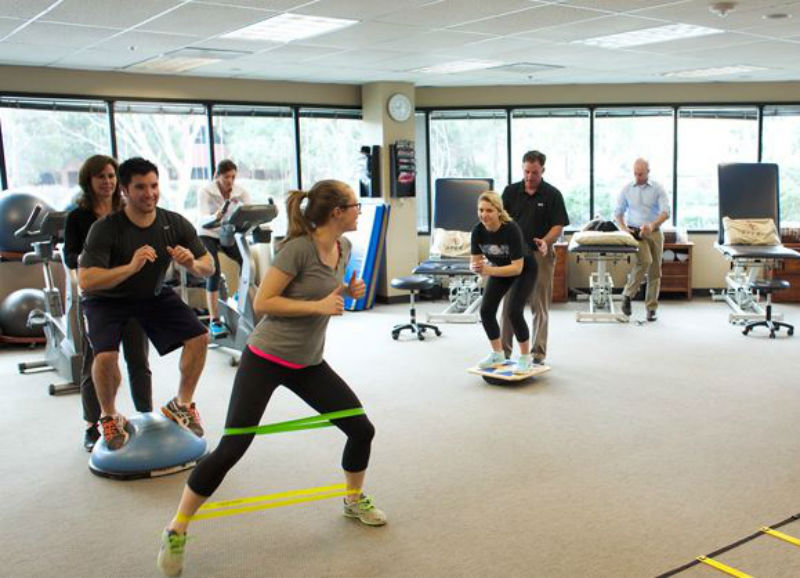
By now, after reading the huge sports hernia guide you understand not only what an indirect hernia is, but also know about the different types of surgery (and how picking the wrong type of operation can lead to lifelong pain).
But now it’s time for the good stuff: sports hernia rehabilitation.
Get the ULTIMATE Sports Hernia Master Guide with 30+ included resources, an in-depth rehabilitation program, tips, tricks, and more! Successfully diagnose, treat, and cure your sports hernia with this complete master guide created by a sports hernia specialist. Note that it is still highly recommended to read this article in full to understand how to get the most out of the guide to treat and cure your sports hernia or groin pain.
The following protocol outlines precisely what you need to do to reach a full, and complete recovery.
Before you can begin to take steps in the proper direction though, you need to have a fundamental understanding of how and why the injury develops in the first place: muscular deficiencies and imbalances.
Let’s start with some good news..
According to a case study now published by NCBI, there is now documented medical evidence that the injury, in some cases, can be completely cured with an intelligent rehabilitation procedure that focuses on gradually introducing increasing stress placed upon the area, but in “safer” planes of movement first.
A general “priority list” for a proper rehab process looks like this:
- Walking (included as the “baseline”–once you can walk pain free you are ready to proceed)
- Strengthening
- Mobility
- Stretching
Notice how stretching is at the very bottom of the list? Because it seems to be the end-all answer to most sports debilitations, it’s also often the recommendation for individuals who have a sports hernia. This is bad advice though. Stretching is not an appropriate cure for this injury, and is only included once surrounding musculature has been trained properly.
This injury is caused by a inherent lack of strength and mobility in the soft tissue that surrounds your hip compartment. By working to address these underlying problems, one can resolve the imbalances that led to the injury in the first place. By taking this holistic and hyper-effective approach, you will increase your chances of full recovery dramatically.
As you work through the list above, it is important that you keep up with every ‘base’ you’ve already covered. For example, once you begin the strengthening stage, it is still very important that you continue to walk daily.
Once you are completing the strengthening phase without problem, don’t fail to keep up with the strengthening and walking. If you fail to follow this important point you will not reap the cumulative benefits of this program!
If you are able to walk about pain free, add in time on the elliptical and see if that creates any additional issues or introduces new pain. Once you’ve mastered both walking and the elliptical machine, you are ready to move forward with the actual ‘rehab’ part of the protocol.
Sports Hernia Rehabilitation Step 1: Rebuilding Strength
The exercises from the video are absolutely crucial for “resetting” the dysfunctional behavior of your inhibited posterior chain. How does it get like this? Modern humans are constantly putting themselves in poor positions:
- Sitting at a desk
- Driving a car
- Using a phone
- Slouching posture
- Bad form while lifting
The list could go on and on, but the point is this: sitting down all day (along with all of the other ‘side effects’ of living in today’s modern world) inhibits one’s natural movement patterns. Your glutes become insanely tight. Your abductors become inhibited. Your adductors stop working to track your knees properly. Your hamstrings atrophy and become weak in relation to your quads.
Bottom Line Up Front: bad news for anyone looking to make a full recovery with sports hernia rehabilitation.
But, the good news is that all you need to do is follow through with the 7 movements. Start with three sets of eight, and gradually work up to four sets of 12.
- Hip Bridge
- Dog Leg
- Side Levers
- Adduction
- Roll-Outs
- Reaching One-Legged Deadlifts
While performing these, you must not feel any sort of pain. If you do, cease immediately and instead focus on walking. Once you can walk 2-3 miles pain free, incorporate hills and stairs. After you conquer that, it’s time to return to these exercises and give it another shot.
Sports Hernia Rehabilitation Step 2: Mobility
Once you are doing great with the first two parts (walking and getting stronger) it’s time to add in the third element: mobility. By working through the proper movements, you will be able to get rid of your poor movement habits that got you into the injury in the first place.
For the in-depth guide, click here. Otherwise, watch the video below as you follow along.
Again, keep in mind that you should not be experiencing any level of pain while doing these. Discomfort is okay, but pain is not.
The more of a conservative approach you take to introducing new exercises or trying to strive for milestones, the much better chance you will have at a full recovery. What exactly does this mean? Instead of rushing into the strengthening exercises as soon as you can walk pain free, focus on increasing your walking distance–focus on solidifying your current level of progress, wherever that may be, before moving on.
By doing this, you will ensure that you are much less likely to run into the same old pain you used to have, which is devastating mentally when you are trying to beat this. Additionally, it will simply allow for a more strict and well-followed rehab plan. You only get to do rehab once, so make sure you do it the right way!
